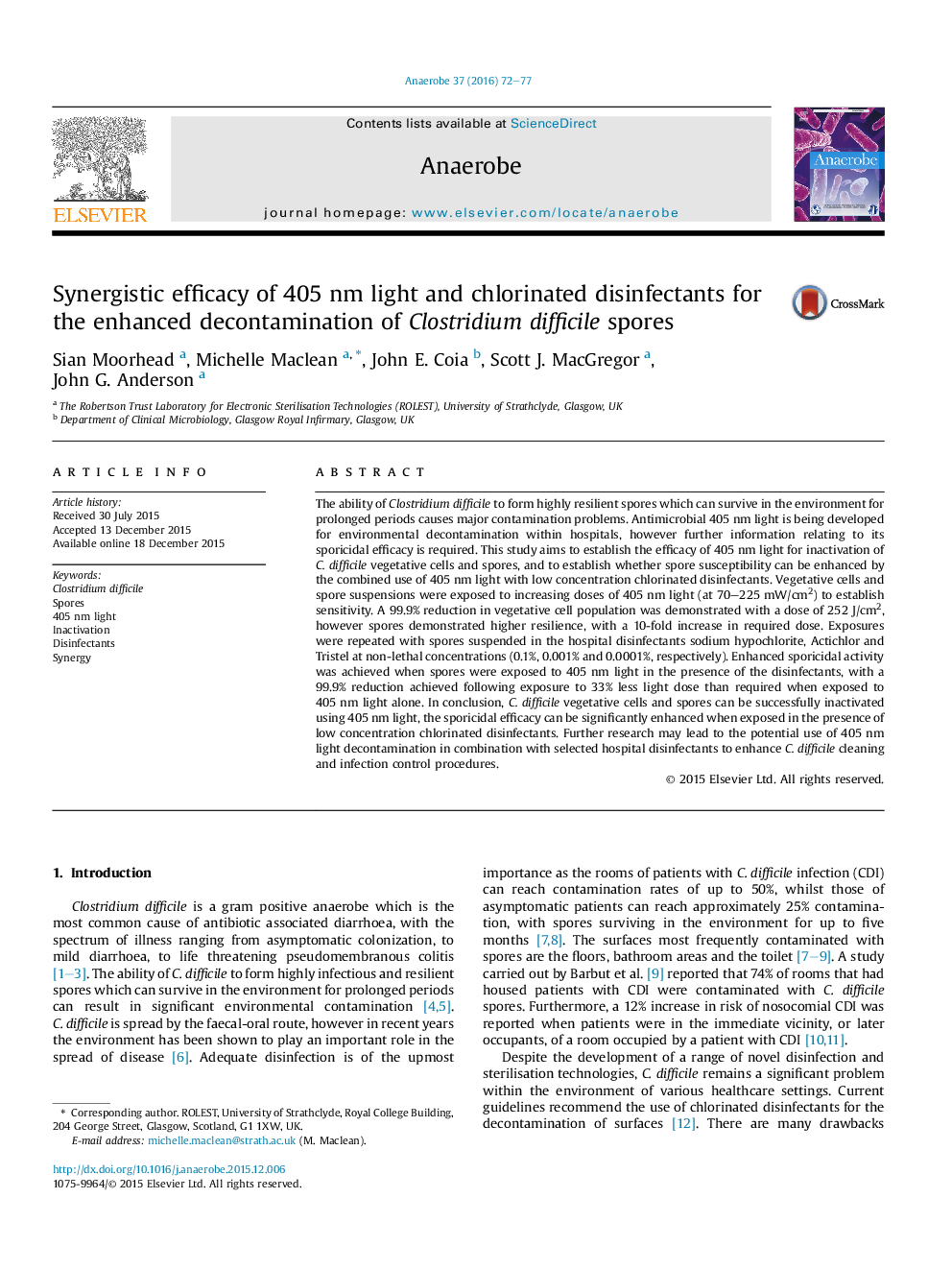| کد مقاله | کد نشریه | سال انتشار | مقاله انگلیسی | نسخه تمام متن |
|---|---|---|---|---|
| 3395002 | 1592827 | 2016 | 6 صفحه PDF | دانلود رایگان |

• Clostridium difficile vegetative cells and spores were inactivated by 405 nm light.
• Spores require ∼10-fold higher doses of 405 nm for inactivation than vegetative cells.
• Combined use of 405 nm light & chlorinated disinfectants gave synergistic inactivation.
• Use of 405 nm light might allow use of reduced chlorinated disinfectant concentrations.
The ability of Clostridium difficile to form highly resilient spores which can survive in the environment for prolonged periods causes major contamination problems. Antimicrobial 405 nm light is being developed for environmental decontamination within hospitals, however further information relating to its sporicidal efficacy is required. This study aims to establish the efficacy of 405 nm light for inactivation of C. difficile vegetative cells and spores, and to establish whether spore susceptibility can be enhanced by the combined use of 405 nm light with low concentration chlorinated disinfectants. Vegetative cells and spore suspensions were exposed to increasing doses of 405 nm light (at 70–225 mW/cm2) to establish sensitivity. A 99.9% reduction in vegetative cell population was demonstrated with a dose of 252 J/cm2, however spores demonstrated higher resilience, with a 10-fold increase in required dose. Exposures were repeated with spores suspended in the hospital disinfectants sodium hypochlorite, Actichlor and Tristel at non-lethal concentrations (0.1%, 0.001% and 0.0001%, respectively). Enhanced sporicidal activity was achieved when spores were exposed to 405 nm light in the presence of the disinfectants, with a 99.9% reduction achieved following exposure to 33% less light dose than required when exposed to 405 nm light alone. In conclusion, C. difficile vegetative cells and spores can be successfully inactivated using 405 nm light, the sporicidal efficacy can be significantly enhanced when exposed in the presence of low concentration chlorinated disinfectants. Further research may lead to the potential use of 405 nm light decontamination in combination with selected hospital disinfectants to enhance C. difficile cleaning and infection control procedures.
Journal: Anaerobe - Volume 37, February 2016, Pages 72–77